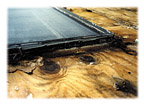
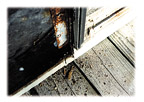
That was my conclusion a few years back when I tackled one of my most interesting projects: a large beachfront condominium in a secluded resort community. The purpose of the project was to perform a routine visual inspection of the exterior building envelope to determine the causes of water leakage into the building.
The facade was constructed of EIFS and perforated with numerous windows and sliding glass doors that provided spectacular views of the ocean. It was one of the best places to be, oh, for say about three or four days. Several years and six hurricanes later, this project would turn out to be a testament for using EIFS.
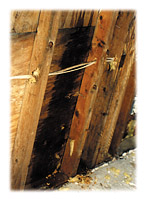
House of horrors
During the initial phase of the projects, many typical problems with the EIFS were encountered, including cracked and delaminated lamina, and poor quality (or lack of) sealant in joints between EIFS and adjacent building systems. Digging a little deeper, it was evident that gaps and improper fitting between the EPS-insulation boards were contributing issues to the cracking. Also, the gypsum sheathing was deteriorated with delaminated paper facings and significant moisture contents, even though it hadn't rained for quite some time. The mold and mildew in the wall cavity and on the interior gypsum wallboards looked like a biology experiment gone awry. If I was 30 years younger, I would have thought it was "cool," but knowing that mold can be a health hazard to human occupants, this was a serious issue.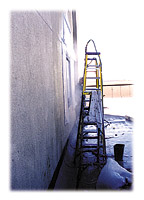
Many issues relating to the windows were also contributing factors to the water leakage. For example, galvanic corrosion between dissimilar metal components of the windows had caused perforation of the window system that increased the building's susceptibility to water penetration. Also, the windows did not have an adequate rating against water penetration.
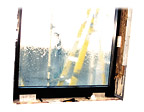
A few short months after this beachfront reprieve from the office, the exterior envelope of the project was literally wiped-out by a series of hurricanes. The phone rang and it was "back to the beach." However, this trip was into the aftermath of disaster. The community was literally transformed. Upon reaching the job site, I was reminded of the dissection portion of high school biology class, with the skin pulled off the subject, revealing only the inner guts of the building. It was obviously time to go all out in viewing and documenting the exposed conditions discovered. The initial conditions that were uncovered several months prior were found to be extensive throughout the building.
No guts no glory
Moving forward with the condominium association, it was time to design repairs for the exterior building envelope: roofing, windows and wall cladding. During the schematic design phase, meetings were conducted with local building officials who were skeptical of replacing the existing cladding system with yet another EIFS. In the midst of class action lawsuits around the country and all the water leakage complaints piling up on the desks, their concern was well founded.
Picture this: During the equinox of EIFS class-action lawsuits, and all the bad rap plaguing the EIFS industry, a design had to be made for an extensive EIFS in one of the most unforgiving environments on the planet for a building facade--not to mention that this facade was to again be perforated with numerous windows and doors to capture as much of the ocean views and breezes as possible.
Now was the time for all great architects, engineers and contractors to figure out how to avoid the list of problems encountered in the past. With sleeves rolled up, the design development proceeded.

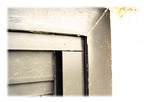
The next step was to select an economical window system for this project. Wood, vinyl, composite and aluminum window systems were evaluated. Again after the usual schematic design phase, a commercial-grade aluminum window system was selected for this project. For the height, configuration and geographic exposure of this project, it was calculated that the window system would need to resist about 2 1/2 inches of water head build-up in the sill. In other words, rain and inward wind pressure could cause water to build up in the sill on the order of 2 1/2 inches. The 2 1/2-inch height was calculated using a percentage of the code-specified inward wind pressure, as applied to other physics-type equations. Normal standards of care in the industry and economics make this a reasonable, yet not all-encompassing way of rating the window system against water infiltration.
A mock-up repair was specified for one window and the surrounding EIFS, ensuring that the typical details on the project were encompassed. All steps in the construction of the mock-up were documented and then field water penetration was performed at various phases of the construction. This is where it gets even more interesting.
The metal studs and the EIFS sheathing (with a trowel applied waterproofing membrane system) were installed. This waterproofing membrane system met the code requirements for a "water barrier" that protected the sheathing and wall framing. Also, this membrane system required simple termination details and adjacent construction such as around window openings and building columns.
The window system was then installed using a custom architectural sub-frame sill system. The sub-frame system was installed in the rough opening after the EIFS sheathing system. The sub-frame was sealed in place using its custom design features that were integral with the aluminum extrusion. The window was then installed. At that point, a water spray rack was positioned over the facade area and a calibrated water spray was applied to the facade. A pressure chamber with room for six people was constructed on the interior of the building. This pressure chamber was evacuated using blowers.
During the testing, some water leaked through fastenings used to secure the window's sub-sill into place and through EIFS seals. Water also leaked through the terminations of the waterproofing membrane system. Small adjustments were made to the sill fastening system and the waterproofing terminations. The window-wall assembly was re-tested with no leaks.
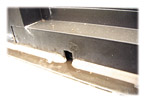
No leaks
This testing demonstrated that the wall system did not leak, even without the EPS boards and EIFS lamina not yet installed! As long as the testing equipment was on site, the remainder of the EIFS and sealant joint systems were constructed and allowed to cure. The sealant joints were intentionally slit to simulate the aging effects of sealant. Subsequent water penetration testing was performed and again leakage occurred. But how could this be?It was determined that some of the isolated mechanical fasteners for the EPS board had created unsealed holes in the waterproofing. The EIFS was deconstructed around these isolated fastener locations and a procedure was developed to ensure that the fasteners only penetrated the membrane system at areas of self-sealing membrane-type flashing. The EIFS was rebuilt and this time there were no leaks!
We felt like we had reached a milestone by demonstrating the value of checking the construction of the mock-up at various times during its construction. The entire elapsed testing time in the field was limited to about four days. Finally, the skeptics in the project gallery of onlookers, those who felt that the testing program was interesting but not required, were quieted. The required level of integrity for the construction of this project had been determined and documented. The construction and contract documents were modified and the job standard was established.
At this point, a symbiotic union existed between the architect, owner, contractor, EIFS manufacturer and window manufacturer. What was required was understood; what was to be constructed was understood; what was built was what was required. The project was completed about 18 months later, with significant field observation services provided by the architect.
Over dinner one night after the completion of the project, our EIFS contractor, Leo Sheehan, of The Dan Sheehan Co., of Savannah, Ga., said, "Well, Bubba, finally all the right ingredients were pulled together to make this one of the projects where we have great confidence in the EIFS performance--not to mention the entire facade. The procedures used on this project should be mandatory for all projects."
Unexpected hurricane test
Not one month after taking occupancy of the building, the project was assaulted by yet another hurricane! Also to follow was yet another hurricane only months later. Imagine getting the phone call to come down and check things out--again. All subsequent inspections revealed that the exterior walls, windows and roofs had performed as theoretically anticipated (very well) in the face of brutal, hurricane force wind and rain.Today, as we inspect additional EIFS projects, we continue to see a theme of re-occurring problems in EIFS and window wall systems. If there are not windows or other significant openings in the EIFS wall, the failures tend to be at EIFS terminations where sealant flashings are installed. This is not a problem with the EIFS, but rather a failure to know whether all parties involved in the construction phase knew what was required and what was to be constructed. If multiple window penetrations are in the EIFS, the failures tend to be related again to termination sealant details or internal problems with the window system.
If the great Hammurabi were still alive, I imagine that he would establish the following amendment to his building code:
o EIFS window walls shall be designed as an integrated wall system with a coordinated secondary line of defense against water penetration.
o The second line of defense shall collect, control and divert water to the exterior of the facade.
o The architect/engineer shall be responsible for the design of the entire wall system.
o The EIFS contractor shall be responsible for the inspection of the framing to ensure compliance for application of his EIF system.
o The window system shall be completely coordinated and integrated with the EIFS wall and not installed before or after the EIFS is completed.
o Mock-up testing in the field shall be required, including any subsequent contract modifications.
o All applicable punishments of the original Code of Hammurabi shall be applicable.

Report Abusive Comment